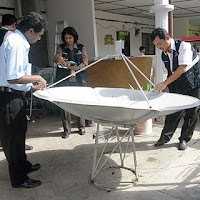
Sambil pergi majlis pertunangan sempat eyeball dengan 9M2MZ (pak marzuki) di rumah beliau di Jeniang.

Sambil pergi majlis pertunangan sempat eyeball dengan 9M2MZ (pak marzuki) di rumah beliau di Jeniang.


 Repeater yang terletak di ketinggian 403 kaki asl, juga merupakan satu kemudahan yang tidak ternilai kepada ahli-ahli ASTRA sekitar Daerah Sik. Repeater 9WO433 dilinkkan dengan Repeater 9MX244 di Bukit Larut.
Repeater yang terletak di ketinggian 403 kaki asl, juga merupakan satu kemudahan yang tidak ternilai kepada ahli-ahli ASTRA sekitar Daerah Sik. Repeater 9WO433 dilinkkan dengan Repeater 9MX244 di Bukit Larut. Kami dari warga ANGKASA ingin mengucapkan Selamat Hari Raya Aidilfitri, Maaf Zahir & Batin.
Kami dari warga ANGKASA ingin mengucapkan Selamat Hari Raya Aidilfitri, Maaf Zahir & Batin.
Picture 1
Malay version
 di Southern California kalau tak salah saya. Mempunya ahli seramai 70 ribu orang pada tahun 1975 dan sekarang melebihi 73 ribu orang. Ten Ten international Net ini juga mempunyai commitees’ yang kuat dan bertanggungajawab membangunkan Ten Ten club ini. Seperti biasa sesiapa yang berminat menjadi ahli mestilah register dan perlu membayar yuran keahlian. Apabila anda sudah register anda akan diberi nombor special “10-10 Number” di samping callsign. Oleh sebab itu tiada menjadi masalah apabila kita berQSO dalam fequency kita menyebut callsign kita dengan no ahli ASTRA contoh: - 9W2RIE ASTRA 0414. Sedangkan Ten Ten club ini di iktiraf oleh ITU boleh menggunakan nombor special apa salahnya kita mempergunakan nombor astra. Penggunaan nombor astra untuk pengetahuan anda masih lagi dalam kajian oleh ahli jawatan kuasa tertinggi astra namun boleh di peraktikkan.
di Southern California kalau tak salah saya. Mempunya ahli seramai 70 ribu orang pada tahun 1975 dan sekarang melebihi 73 ribu orang. Ten Ten international Net ini juga mempunyai commitees’ yang kuat dan bertanggungajawab membangunkan Ten Ten club ini. Seperti biasa sesiapa yang berminat menjadi ahli mestilah register dan perlu membayar yuran keahlian. Apabila anda sudah register anda akan diberi nombor special “10-10 Number” di samping callsign. Oleh sebab itu tiada menjadi masalah apabila kita berQSO dalam fequency kita menyebut callsign kita dengan no ahli ASTRA contoh: - 9W2RIE ASTRA 0414. Sedangkan Ten Ten club ini di iktiraf oleh ITU boleh menggunakan nombor special apa salahnya kita mempergunakan nombor astra. Penggunaan nombor astra untuk pengetahuan anda masih lagi dalam kajian oleh ahli jawatan kuasa tertinggi astra namun boleh di peraktikkan.